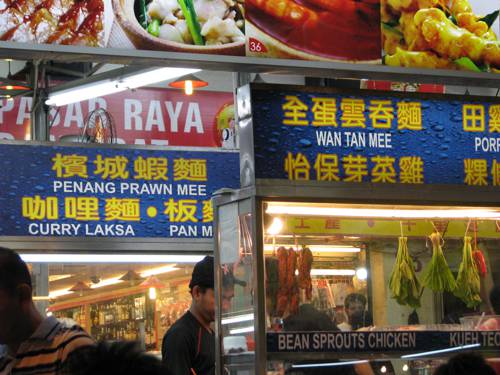
FAQ About The Role of Street Food in Cultural Exchange

What is street food and why is it important for cultural exchange?
Street food refers to ready-to-eat food or beverages sold by vendors in public places, typically on the street. It is a crucial element for cultural exchange as it offers an authentic taste of a region's culinary heritage and provides an opportunity for people from different backgrounds to experience and appreciate diverse food traditions. Street food markets act as melting pots where locals and tourists alike can interact, exchange cultural narratives, and discover new flavors and cooking techniques.

How does street food influence global culinary trends?
Street food often introduces unique cooking methods, ingredients, and flavor combinations to a wider audience, which can inspire new culinary trends on a global scale. As travelers encounter and become enamored with these foods, they frequently bring them back to their home countries, prompting chefs and restaurateurs to incorporate these exotic tastes into their menus. Over time, this leads to a fusion of culinary traditions, adaptation of street food recipes for different palates, and even the emergence of new food movements such as food trucks and pop-up restaurants.

Can you provide examples of street foods that have become globally popular?
Many street foods have achieved international fame, becoming staples in countries far from their origins. For example, the Mexican taco, Italian pizza, Chinese dumplings, and Thai pad thai have all transcended borders to become beloved offerings worldwide. These foods not only depict the culinary art form of their native cultures but also adapt and evolve as they integrate into different cultural contexts.

In what ways do street food vendors contribute to cultural interaction?
Street food vendors play a pivotal role in cultural interaction by serving as ambassadors of their local cuisine and traditions. When tourists and locals visit food stalls, they often engage with the vendors, learning about the history and significance of the dishes they purchase. This engagement promotes an understanding and appreciation of different cultures through casual, everyday exchanges. The vendors themselves also gain insights into the visitors' backgrounds, fostering a bilateral exchange of ideas and culinary practices.

What role does street food play in urban culture?
Street food is a vibrant component of urban culture, often reflecting the dynamic and diverse nature of city life. It contributes to the identity of a city by promoting its unique flavors and food traditions. Furthermore, street food gatherings, such as night markets and food festivals, become cultural events in themselves, drawing people from all over to celebrate culinary diversity and innovation. These occasions often encourage the blending of cuisines and attract artists and performers, increasing the cultural vibrancy of an urban area.

How does street food support local economies?
Street food is a vital part of local economies, providing livelihoods for millions of people worldwide. It offers entrepreneurs, often from low-income backgrounds, an accessible entry point into the food industry due to its lower start-up and operation costs compared to traditional restaurants. Additionally, street food attracts tourists, who contribute to local economies by spending money not just on food, but also on transportation, accommodation, and other local services. This economic activity supports the broader community and helps sustain local culinary traditions.

What are the key elements that make street food a tool for culinary diplomacy?
Street food acts as a tool for culinary diplomacy by showcasing a country's gastronomic wealth, emphasizing cultural diversity, and fostering intercultural dialogue through food. Culinary diplomacy involves using food as a medium to improve cultural understanding and relations between people from different countries. Street food embodies these principles by allowing people to experience authentic and representative dishes of various cultures in an informal setting, often leading to discussions that break down cultural barriers and promote mutual respect and curiosity.

Are there any health concerns associated with street food? If so, how are they addressed?
Health concerns associated with street food typically revolve around food hygiene and safety. Because street food is often prepared and sold in outdoor environments, there is a potential risk of contamination. However, many cities have implemented regulations that establish food safety standards, such as regular inspections and licensing for vendors, to ensure safe consumption. Educating vendors about proper food handling and sanitation practices also helps mitigate health risks. As consumers, it's advisable to observe vendor cleanliness and look for stalls with high turnover of food, which usually indicates freshness.

How does street food encourage culinary innovation and creativity?
Street food encourages culinary innovation and creativity by allowing vendors to experiment with flavors, ingredients, and presentation without the constraints often found in formal restaurant settings. This flexibility leads to inventive dishes that may blend traditional recipes with contemporary techniques or ingredients. The informal and competitive nature of street food markets pushes vendors to continually innovate to attract customers, leading to unique and diverse culinary offerings that can inspire broader food trends.

What are some cultural festivals centered around street food?
Cultural festivals that focus on street food include the Singapore Food Festival, Taiwan's Night Market Culture Festival, the New York City Wine & Food Festival, and the World Street Food Congress. These events celebrate street food's role in cultural identity and bring together food enthusiasts to explore and enjoy a wide array of dishes. They often feature cooking demonstrations, food stalls, and live performances, creating a dynamic atmosphere that reflects the rich tapestry of global culinary traditions.

How has street food adapted to modern dietary preferences and restrictions?
Street food has adapted to modern dietary preferences and restrictions by offering a more diverse range of options that cater to health-conscious consumers, vegetarians, vegans, and individuals with food allergies. Many vendors now emphasize the use of fresh, organic ingredients and include gluten-free, dairy-free, or meat-free dishes on their menus to accommodate varied diets. This adaptability not only broadens the appeal of street food but also highlights its capacity to evolve with changing consumer needs while retaining cultural authenticity.

What impact has social media had on the popularity of street food?
Social media has significantly boosted the popularity of street food by increasing its visibility and accessibility to a global audience. Platforms like Instagram, Facebook, and TikTok allow food enthusiasts to share vibrant images and videos of their street food experiences, effectively promoting these foods beyond local borders. This digital dissemination fuels international curiosity and interest, encouraging tourism and enabling street food vendors to reach wider markets while fostering cultural exchange through the shared love of food.

How do street food markets foster community spirit?
Street food markets foster community spirit by serving as gathering places where people from various backgrounds come together to eat, socialize, and share their cultures. These markets create an inclusive and lively environment where cultural differences are celebrated through food. The communal experience of eating together underpins a sense of belonging and camaraderie, encouraging locals and visitors alike to engage with one another, strengthening community bonds.

Why is it important for countries to preserve their street food traditions?
Preserving street food traditions is important as they are integral to a country's cultural heritage and identity. Street foods often represent centuries-old recipes and cooking practices that have been passed down through generations. By maintaining these traditions, countries ensure the survival of their unique culinary history and provide future generations with a link to their cultural roots. Additionally, protecting street food practices supports local economies and keeps culinary diversity alive in the face of globalization.

What challenges do street food vendors face today?
Street food vendors face several challenges including regulatory hurdles, competition from established food businesses, and rising costs of ingredients and supplies. They must often navigate complex licensing requirements and adhere to stringent health and safety regulations to operate legally. Moreover, the competitive food market demands constant innovation to retain customer interest, which can be resource-intensive. Despite these challenges, street food vendors continue to thrive by adapting and finding creative ways to enhance their offerings.

How has globalization affected street food cultures worldwide?
Globalization has both positively and negatively affected street food cultures. On one hand, it has helped spread awareness and appreciation of street food from different countries, promoting cultural exchange and diversity. On the other hand, globalization can sometimes lead to the homogenization of street food offerings, as mass-produced ingredients and cooking techniques replace traditional methods and local specialties. Despite these changes, many street food vendors strive to preserve authenticity while adapting to global influences.

What are some prominent street food hubs around the world?
Prominent street food hubs known for their rich and diverse offerings include Bangkok's Street Food Scene in Thailand, New York City's various food carts and trucks, Cartagena in Colombia, Marrakech’s vibrant markets in Morocco, Delhi's Chandni Chowk in India, and the hawker centers of Singapore. These locations are famous for their eclectic mix of flavors and are often celebrated for their historical and cultural relevance to the cities they inhabit.

How has street food evolved over the years?
Street food has evolved significantly over the years, reflecting changes in societal norms, technological advancements, and global influences. Originally a source of cheap convenience food for workers and travelers, street food has gained culinary recognition and prestige. Today, many street food vendors incorporate modern cooking techniques, utilize digital payment systems, and leverage social media for marketing. This evolution has helped street food gain a reputation for innovative and gourmet offerings, bridging traditional and contemporary culinary worlds.

What role do food critics and bloggers play in the street food scene?
Food critics and bloggers play an integral role in the street food scene by highlighting popular vendors and emerging trends to a wide audience. Their reviews and recommendations often influence public perception, guiding locals and tourists to the best spots. By sharing detailed experiences and culinary insights, these influencers help promote lesser-known street foods and vendors, contributing to their success and encouraging a broader appreciation of street food culture.

How is street food more than just a meal?
Street food is much more than just a meal; it embodies cultural stories, traditions, and community interactions. Each dish tells a story of its origin, ingredients, and preparation methods, offering insight into a region's history and lifestyle. The social aspect of street food, where people gather, interact, and experience different cultures through shared meals, fosters a sense of connection and understanding among diverse groups. Thus, street food serves as a cultural bridge that brings people together across boundaries.
